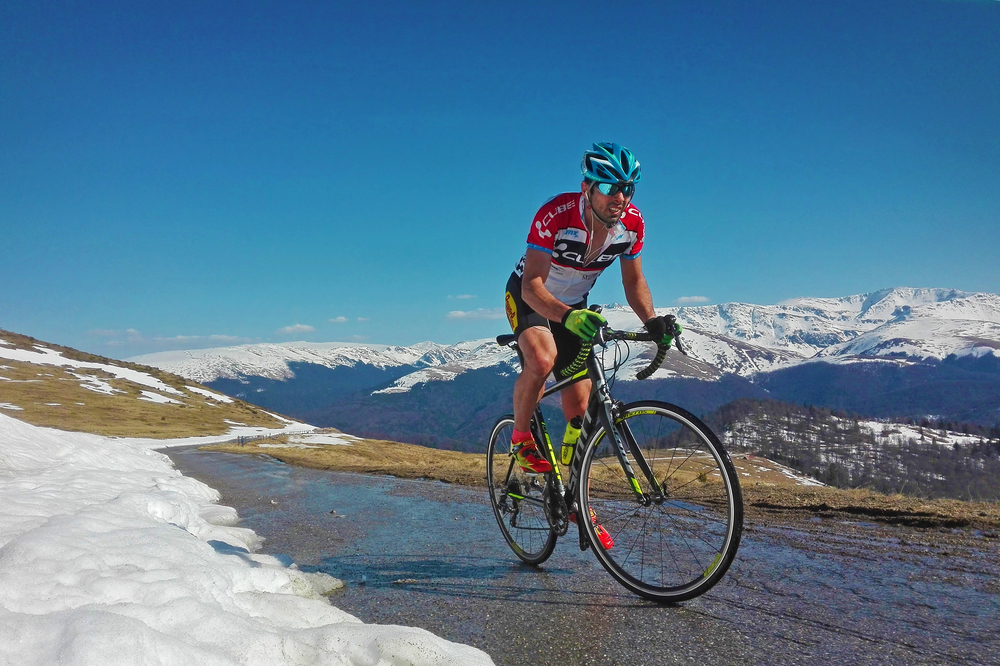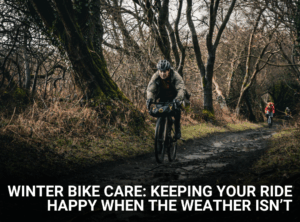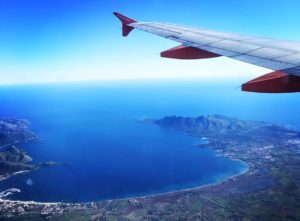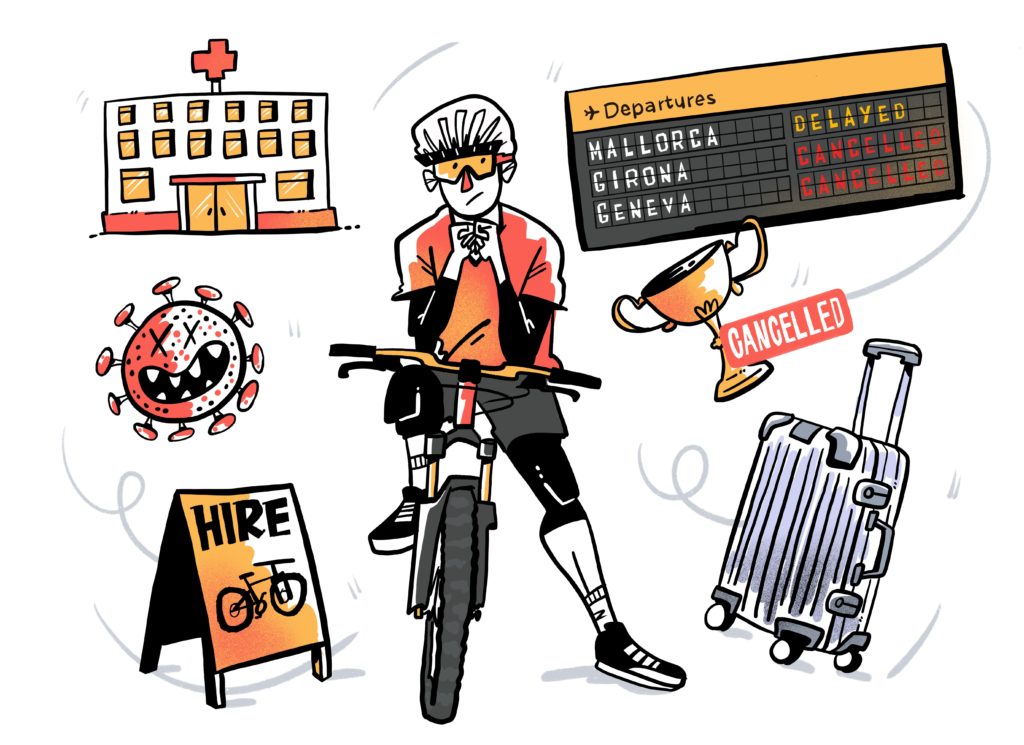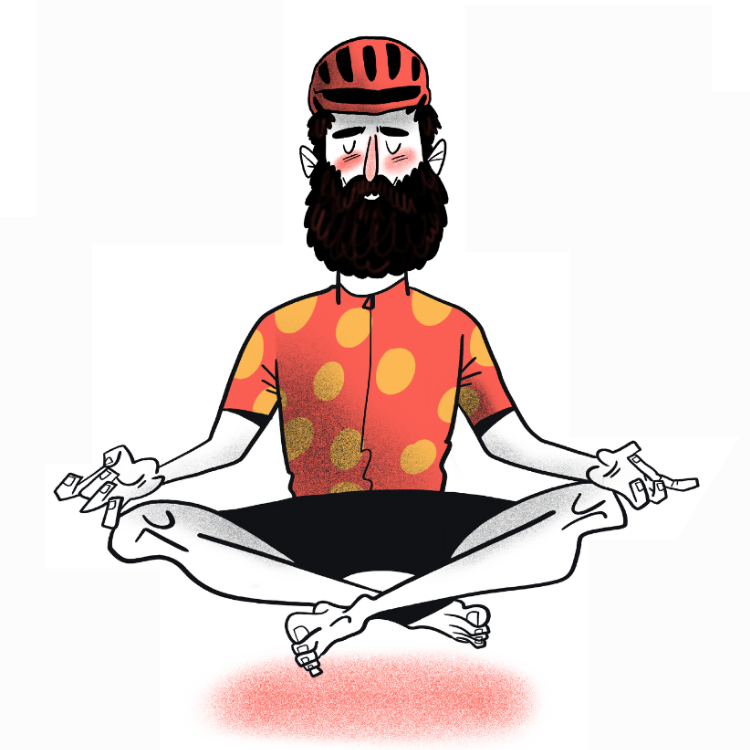What happens to your body when you head over 2000m?
If you’ve ever ridden a bike in the mountains you’ll know what it feels like when the air gets thinner and thinner. It’s a strange sensation the first time you feel it as you push harder on the pedals and the power meter reads lower. When our rate of perceived exertion no longer matches our output it’s usually a sign that something is wrong – but here, it’s to be expected. What exactly happens to us when we head to altitude and why does training in this state seem to be so beneficial?
Sometimes, when watching Le Tour you’ll see riders who have looked great all race suddenly crack at the top of high passes. This is one of the reasons for the rich history of success of South Americans – many of whom are born and raised over 2500m of altitude. The high cols are nothing to them. The ability to continue to perform at altitude is one that has benefits when you’re competing at sea level. I’ve experienced this myself recently, where my power dropped at the top of the Col de la Columbière despite my effort level remaining the same. I was well within my limits so we put it down to the altitude. The benefits of altitude are of the reasons many professional cyclists choose to live and train in Andorra for much of the year!
What happens at altitude?
In the human body a number of processes take place that require oxygen. This applies to us on and off the bike. Of course, we all need oxygen to survive so taking it away to make gains seems counter intuitive. If we restrict the amount of oxygen we have, we force our body to become a bit more frugal in its use leading to these processes becoming more efficient. Scientifically speaking, what happens is that athletes exposed to altitude experience hypoxia – leading to lower blood and tissue oxygenation. This leads to increased production of red blood cells meaning that when we return to lower altitudes, our body is able to cart more oxygen around in our blood. Access to oxygen in the blood is a major limiter in performance so altitude training can unlock large gains in this regard.
Train low, sleep high
This is a phrase heard quite a lot amongst cyclists and coaches. It refers to the practice of sleeping at altitude and doing your training sessions down in the valley. The reason for this is athletes want to maintain the intensity of training possible at lower altitudes (where there’s more oxygen) while reaping the rewards of resting at higher altitudes forcing adaptations. Living high enables total red blood cell count to increase while allowing athletes to train normally. Sleeping high will slow recovery down though – so it’s not a completely risk free approach. This is currently the approach most often practiced by professional cyclists. Training low also has the advantage of more reliable weather and a bit more warmth!
Returning to sea level
When you return to sea level you’ll likely feel a bit sluggish. Altitude places a strain on your body which requires some recovery time. After a few days of rest you’ll be ready to start training again, but this time with the reward of doing so with more oxygen. If you happen to be training at altitude, you will be able to access the performance enhancing benefits for a period after so it’s a good time to go after a PB. Training at altitude and then a return to sea level has been shown to boost performance by up to five percent from a 28 day stint. To put that in perspective, if you have a 300W threshold power, altitude could give you up to 15 extra watts in a month!
How can we simulate altitude in the UK?
Since going to altitude can be expensive, as for most it requires a relatively lengthy stay away from home. This means quite a lot of effort has gone into trying to simulate this. Altitude tents are one option, even used by many serious amateur cyclists. This can allow athletes to practice the popular “train low, sleep high” method despite living at sea level. They can cost in excess of a few grand but compared to the cost of multiple trips to Sierra Nevada it seems quite small. Around Europe and in the UK there also exist a series of ‘altitude hotels’. One of these hotels is in Loughborough – the home of much of British sport. The way these work is that the room is essentially an altitude tent with a thermostat like device on the wall. This allows guests to fine tune their sleeping height and then train around Loughborough as usual. The advantage of simulated altitude is just that – “tune-ability”. Some people find they respond better at 1900m, others at 2400m for example. Finding this out in an altitude hotel is much easier than walking up and down a mountain!
When the road heads toward the sky, our bodies start to suffer. The processes which require oxygen have less of it so our bodies are forced to adapt and become more efficient. Altitude training is good to know about and many of the principles can be applied to our own sessions too – we can even simulate the effects of altitude with some cool tech! Altitude gains have been shown to be upward of five percent and this can be accessed by us mortals with a little bit of investment and careful planning without having to spend huge amounts of time and money in Sierra Nevada.
With altitude often comes mountains and with mountains come risk. If you want to make sure that you’re covered then

